-
 Bitcoin
Bitcoin $79,309.9469
5.46% -
 Ethereum
Ethereum $1,575.4794
6.76% -
 Tether USDt
Tether USDt $0.9996
0.03% -
 XRP
XRP $1.8684
10.75% -
 BNB
BNB $559.1592
4.86% -
 USDC
USDC $0.9998
-0.02% -
 Solana
Solana $108.9193
9.75% -
 Dogecoin
Dogecoin $0.1493
10.49% -
 TRON
TRON $0.2326
3.85% -
 Cardano
Cardano $0.5862
10.61% -
 UNUS SED LEO
UNUS SED LEO $8.9694
0.72% -
 Toncoin
Toncoin $3.1094
5.06% -
 Chainlink
Chainlink $11.6110
10.41% -
 Avalanche
Avalanche $17.1493
12.22% -
 Stellar
Stellar $0.2310
12.64% -
 Shiba Inu
Shiba Inu $0.0...01132
6.17% -
 Hedera
Hedera $0.1578
22.08% -
 Sui
Sui $2.0151
12.13% -
 MANTRA
MANTRA $6.2854
6.64% -
 Polkadot
Polkadot $3.5990
7.58% -
 Bitcoin Cash
Bitcoin Cash $276.8413
7.33% -
 Litecoin
Litecoin $71.4393
9.84% -
 Dai
Dai $1.0000
0.01% -
 Ethena USDe
Ethena USDe $0.9990
0.07% -
 Bitget Token
Bitget Token $4.1736
10.38% -
 Pi
Pi $0.5864
5.86% -
 Hyperliquid
Hyperliquid $11.9119
22.51% -
 Monero
Monero $207.4588
8.04% -
 Uniswap
Uniswap $5.1898
7.27% -
 OKB
OKB $52.1447
2.68%
What are Layer 1 and Layer 2 blockchains?
Layer 1 blockchains form the foundation, while Layer 2 solutions enhance scalability and efficiency by processing transactions off-chain and settling them on L1.
Apr 06, 2025 at 10:35 pm
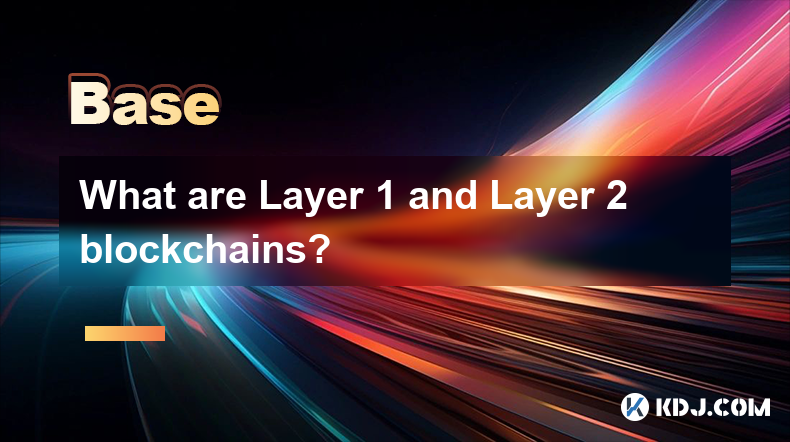
Understanding the Layered Architecture of Blockchain
The blockchain landscape is often described using a layered architecture, most commonly referencing Layer 1 (L1) and Layer 2 (L2) solutions. Understanding this distinction is crucial for navigating the complexities of the cryptocurrency ecosystem. Simply put, Layer 1 refers to the base blockchain protocol itself, while Layer 2 solutions are built on top of Layer 1 to enhance its scalability and efficiency.
Layer 1 Blockchains: The Foundation
Layer 1 blockchains are the foundational protocols that govern the core functionality of a cryptocurrency network. They define the rules for consensus mechanisms (like Proof-of-Work or Proof-of-Stake), transaction validation, and security. Examples include Bitcoin (BTC), Ethereum (ETH), Solana (SOL), and Cardano (ADA). These L1s handle the core functions of the network, including creating and verifying blocks, and securing the entire system. They are the bedrock upon which all other blockchain activity is built. Changes to a Layer 1 blockchain often require significant development and community consensus.
Layer 2 Scaling Solutions: Addressing L1 Limitations
Layer 1 blockchains, while foundational, often face limitations in scalability. As transaction volume increases, processing speeds can slow, and transaction fees (gas fees) can rise significantly. This is where Layer 2 solutions come into play. L2s are designed to alleviate these limitations by processing transactions off-chain, then settling them on the L1. This significantly reduces the load on the main blockchain, leading to faster transaction times and lower fees.
Common Layer 2 Scaling Solutions
Several different approaches exist for building Layer 2 solutions. Each has its own strengths and weaknesses. Some of the most prominent include:
State Channels: These allow multiple parties to conduct many transactions off-chain before settling a single transaction on the Layer 1 blockchain. This minimizes the number of on-chain transactions.
Rollups: These bundle multiple transactions together into a single transaction that is then submitted to the Layer 1 blockchain. There are two main types: Optimistic Rollups and ZK-Rollups. Optimistic Rollups assume transactions are valid unless proven otherwise, while ZK-Rollups use cryptographic proofs to verify transactions without revealing their details.
Sidechains: These are separate blockchains that run alongside the main Layer 1 blockchain. They can offer faster transaction speeds and lower fees but may compromise security if not properly integrated with the main chain.
Plasma: A framework for creating child blockchains that are secured by the main Layer 1 blockchain. This allows for scaling by offloading transactions to these child chains.
The Interplay Between Layer 1 and Layer 2
It's crucial to understand that Layer 2 solutions are dependent on Layer 1. They are not independent blockchains; they rely on the security and finality provided by the underlying Layer 1 protocol. The settlement of transactions processed on Layer 2 ultimately occurs on Layer 1, ensuring the integrity of the overall system. This dependence highlights the importance of a robust and secure Layer 1 infrastructure.
Layer 1 vs. Layer 2: A Comparative Overview
| Feature | Layer 1 | Layer 2 |
|---|---|---|
| Security | High, secures the entire network | Relies on Layer 1 security |
| Scalability | Limited | Significantly improved |
| Transaction Fees | Potentially high, especially during congestion | Generally lower |
| Transaction Speed | Can be slow, especially during congestion | Generally faster |
| Decentralization | Higher | Can vary depending on the implementation |
The Future of Layer 1 and Layer 2
The development of both Layer 1 and Layer 2 technologies continues to evolve rapidly. New consensus mechanisms, improved scaling solutions, and innovative architectural designs are constantly being explored. The interplay between these layers will be crucial in determining the future scalability and adoption of blockchain technology. The synergistic relationship between L1 and L2 is essential for a thriving and efficient cryptocurrency ecosystem. The continued innovation in both layers will determine the future of blockchain technology.
Frequently Asked Questions
Q: What are the advantages of using Layer 2 solutions?
A: Layer 2 solutions offer several key advantages, including significantly improved scalability, faster transaction speeds, and lower transaction fees compared to using the Layer 1 blockchain directly. This makes them crucial for handling high transaction volumes and improving the user experience.
Q: Are Layer 2 solutions secure?
A: The security of Layer 2 solutions is intrinsically linked to the security of the underlying Layer 1 blockchain. While L2s themselves may employ additional security measures, a compromise of the L1 would ultimately impact the security of its L2s.
Q: Which Layer 2 solution is the best?
A: There is no single "best" Layer 2 solution. The optimal choice depends on factors such as the specific requirements of the application, the underlying Layer 1 blockchain, and the trade-offs between scalability, security, and decentralization. Each solution has its own strengths and weaknesses.
Q: Can I use Layer 2 without Layer 1?
A: No. Layer 2 solutions are entirely dependent on Layer 1 blockchains. They are built on top of and ultimately rely on the security and finality provided by the underlying Layer 1. They cannot function independently.
Q: What is the difference between Optimistic Rollups and ZK-Rollups?
A: Optimistic Rollups assume transactions are valid unless challenged, while ZK-Rollups use zero-knowledge proofs to cryptographically verify transactions without revealing their details. ZK-Rollups offer stronger security guarantees but are currently more complex to implement.
Disclaimer:info@kdj.com
The information provided is not trading advice. kdj.com does not assume any responsibility for any investments made based on the information provided in this article. Cryptocurrencies are highly volatile and it is highly recommended that you invest with caution after thorough research!
If you believe that the content used on this website infringes your copyright, please contact us immediately (info@kdj.com) and we will delete it promptly.
- Wyoming Is Launching a Stablecoin Later This Year, Which Could Be the First Issued by a Public Entity in the U.S.
- 2025-04-08 14:20:12
- BNB vs SOL: Which Crypto to Invest in?
- 2025-04-08 14:20:12
- Big News for XRP as Ripple CEO Meets with Trump and Sparks Intrigue Within the Cryptocurrency Community Hinting at Promising Developments.
- 2025-04-08 14:15:12
- Interactive Brokers Expands Cryptocurrency Portfolio by Adding Four Major Altcoins
- 2025-04-08 14:15:12
- US stocks fall on Wednesday, dragged down by a sharp sell-off in tech stocks, as renewed trade war concerns rattle investors
- 2025-04-08 14:10:12
- Just 24 Hours After Adding Its Name to the Roster of Companies Pursuing a Bitcoin (BTC) Treasury Strategy, GameStop (GME) — Led by Its CEO Ryan Cohen — Is Also Adding Its Name to Those Firms Issuing Convertible Debt to Raise Funds for BTC Acquisition
- 2025-04-08 14:10:12
Related knowledge
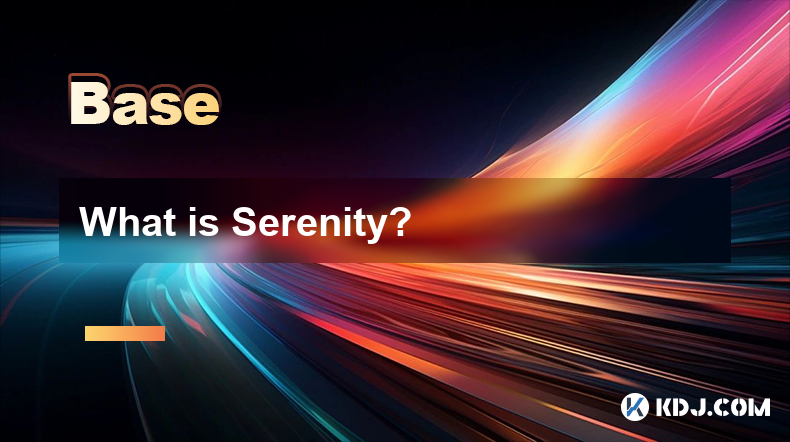
What is Serenity?
Apr 08,2025 at 02:00pm
Serenity, also known as Ethereum 2.0, represents a major upgrade to the Ethereum blockchain. This ambitious project aims to address the scalability, security, and sustainability issues faced by the current Ethereum network. Serenity is not a single update but a series of upgrades that will transform Ethereum into a more efficient and robust platform. Th...

What is Finality Gadget?
Apr 08,2025 at 04:14am
The Finality Gadget is a crucial component in the architecture of certain blockchain networks, particularly those that utilize a hybrid consensus mechanism. It plays a pivotal role in ensuring the finality of transactions, which means that once a transaction is confirmed, it cannot be altered or reversed. This article delves into the intricacies of the ...
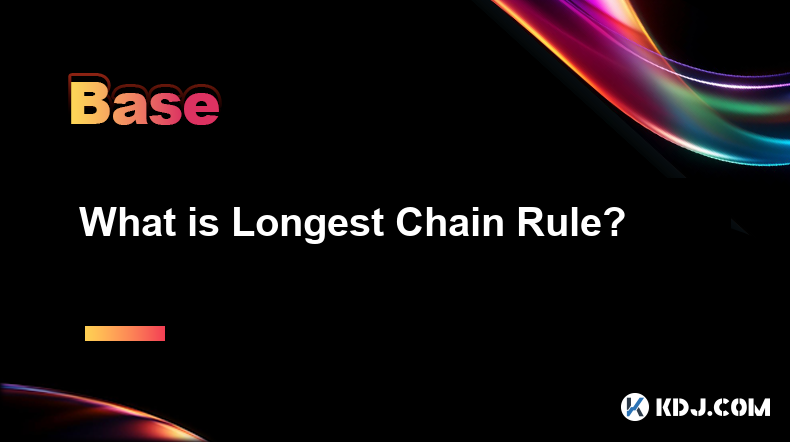
What is Longest Chain Rule?
Apr 08,2025 at 07:50am
The Longest Chain Rule is a fundamental concept in blockchain technology, particularly in the context of cryptocurrencies like Bitcoin. This rule is crucial for maintaining the integrity and security of the blockchain network. In essence, the Longest Chain Rule dictates that the valid blockchain is the one with the most cumulative proof-of-work, which i...

What is Orphan Block?
Apr 08,2025 at 05:00am
What is an Orphan Block?In the world of cryptocurrencies, particularly in blockchain technology, the term orphan block is frequently encountered. An orphan block is a block that has been mined and added to the blockchain but is later discarded or replaced by another block. This phenomenon occurs due to the decentralized nature of blockchain networks, wh...
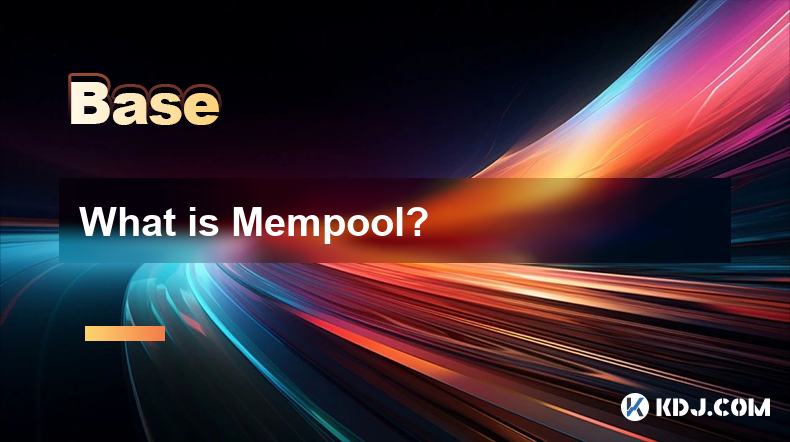
What is Mempool?
Apr 08,2025 at 12:36pm
What is Mempool?In the world of cryptocurrencies, particularly Bitcoin, the term Mempool is frequently mentioned. But what exactly is a Mempool, and why is it important? A Mempool, short for memory pool, is a critical component of the blockchain network that serves as a temporary storage area for unconfirmed transactions. When a user initiates a transac...
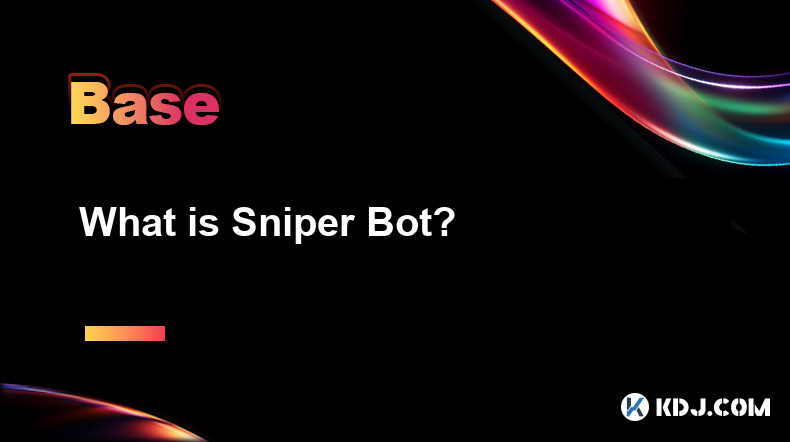
What is Sniper Bot?
Apr 07,2025 at 10:43pm
A Sniper Bot is a type of automated trading software used within the cryptocurrency market to execute trades at optimal times, often milliseconds before other traders. These bots are designed to take advantage of new token listings, price fluctuations, and other market opportunities to buy or sell assets quickly and efficiently. The primary goal of a Sn...

What is Serenity?
Apr 08,2025 at 02:00pm
Serenity, also known as Ethereum 2.0, represents a major upgrade to the Ethereum blockchain. This ambitious project aims to address the scalability, security, and sustainability issues faced by the current Ethereum network. Serenity is not a single update but a series of upgrades that will transform Ethereum into a more efficient and robust platform. Th...

What is Finality Gadget?
Apr 08,2025 at 04:14am
The Finality Gadget is a crucial component in the architecture of certain blockchain networks, particularly those that utilize a hybrid consensus mechanism. It plays a pivotal role in ensuring the finality of transactions, which means that once a transaction is confirmed, it cannot be altered or reversed. This article delves into the intricacies of the ...

What is Longest Chain Rule?
Apr 08,2025 at 07:50am
The Longest Chain Rule is a fundamental concept in blockchain technology, particularly in the context of cryptocurrencies like Bitcoin. This rule is crucial for maintaining the integrity and security of the blockchain network. In essence, the Longest Chain Rule dictates that the valid blockchain is the one with the most cumulative proof-of-work, which i...

What is Orphan Block?
Apr 08,2025 at 05:00am
What is an Orphan Block?In the world of cryptocurrencies, particularly in blockchain technology, the term orphan block is frequently encountered. An orphan block is a block that has been mined and added to the blockchain but is later discarded or replaced by another block. This phenomenon occurs due to the decentralized nature of blockchain networks, wh...

What is Mempool?
Apr 08,2025 at 12:36pm
What is Mempool?In the world of cryptocurrencies, particularly Bitcoin, the term Mempool is frequently mentioned. But what exactly is a Mempool, and why is it important? A Mempool, short for memory pool, is a critical component of the blockchain network that serves as a temporary storage area for unconfirmed transactions. When a user initiates a transac...

What is Sniper Bot?
Apr 07,2025 at 10:43pm
A Sniper Bot is a type of automated trading software used within the cryptocurrency market to execute trades at optimal times, often milliseconds before other traders. These bots are designed to take advantage of new token listings, price fluctuations, and other market opportunities to buy or sell assets quickly and efficiently. The primary goal of a Sn...
See all articles






















































































